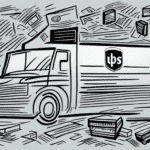How to Handle Packages with a Longest Side Exceeding 48 Inches: Essential Tips for Safe Shipping
Shipping oversized packages can be challenging, especially when the longest side exceeds 48 inches. Proper handling and preparation are crucial to ensure your package arrives safely and intact. This guide provides comprehensive information on managing large shipments, from understanding package dimensions to selecting the right shipping carrier and packing materials.
Understanding the "Longest Side" in Package Handling
The "longest side" of a package refers to the greatest dimension among its length, width, or height. For instance, a package measuring 48 inches in length, 24 inches in width, and 18 inches in height has a longest side of 48 inches. Accurately measuring this dimension is vital, as shipping carriers enforce strict size restrictions.
Most major carriers have specific limits:
- FedEx and UPS: Maximum length of 108 inches.
- USPS: Up to 108 inches for Priority Mail and 130 inches for Parcel Select.
Source: Shipscience Carrier Size Limits
For accurate measurements, ensure you measure from the furthest points on opposite ends of the package, accounting for any irregular shapes.
Assessing Weight and Dimensions
Before shipping an oversized package, accurately determine its weight and dimensions. This information helps in selecting appropriate packing materials and avoiding carrier size restrictions. Additionally, understanding the package's weight assists in choosing suitable equipment for safe handling.
Consider the fragility of your items:
- Use extra cushioning like bubble wrap or foam padding for delicate items.
- Label the package as fragile to ensure careful handling.
For valuable items, purchase shipping insurance to protect against loss or damage. Check with your carrier for available options and coverage limits.
Why Oversized Packages Require Extra Handling
Packages with longest sides exceeding 48 inches are classified as oversized. Handling such packages involves:
- Specialized Equipment: Larger trucks, forklifts, and pallet jacks may be necessary.
- Increased Costs: Carriers often charge additional fees for oversized shipments.
Proper measurement and labeling are essential to avoid unexpected costs and ensure correct classification. Oversized packages might also have longer transit times and limited shipping options.
For a detailed comparison of shipping carriers, visit Shipscience's guide on shipping carriers.
Risks of Mishandling Oversized Packages
Improper handling of oversized packages can lead to:
- Content Damage: Inadequate packing materials may fail to protect fragile items.
- Injuries: Heavy packages can pose risks to handlers if not managed properly.
- Vehicle and Equipment Damage: Oversized items may cause damage during transport.
Mishandling can also result in increased costs, delivery delays, and potential legal issues for both the sender and carrier. Ensure adherence to proper shipping guidelines to mitigate these risks.
Packaging Tips to Prevent Transit Damage
Effective packaging is vital for the safety of oversized packages. Follow these tips:
- Use sturdy materials such as corrugated cardboard, bubble wrap, and foam padding.
- Reinforce corners and edges to prevent crush damage.
- For extremely fragile or heavy items, consider using wooden crates.
Additionally, clearly label your package with recipient and sender information. Utilizing a shipping service with tracking can help monitor your package's journey.
Choosing the Right Shipping Carrier for Oversized Packages
Selecting an appropriate carrier involves considering:
- Size and Weight Restrictions: Ensure your package complies with the carrier's limits.
- Handling Processes: Some carriers offer specialized services for oversized items.
- Insurance Policies: Verify coverage options for large shipments.
Researching carrier reviews and seeking recommendations can help you choose a reliable partner for your shipping needs.
Proper Labeling and Marking for Easy Identification
Accurate labeling ensures your package is handled correctly:
- Use a waterproof marker for addresses.
- Mark the package as "Oversized" or "Fragile" as needed.
- Include contact phone numbers for both sender and recipient.
For international shipments, attach all necessary customs forms and documentation to avoid delays.
Understanding Carrier Shipping Policies for Oversized Packages
Before shipping, familiarize yourself with the carrier's policies:
- Check size and weight limitations.
- Understand any additional fees or required handling procedures.
- Ensure compliance with packaging standards, which may include using pallets or crates.
Contact the carrier directly for any specific inquiries to ensure a smooth shipping process.
Options When Exceeding Carrier Limits
If your package surpasses a carrier's maximum limits:
- Consider using a freight carrier.
- Split the shipment into smaller parcels.
- Modify packaging to reduce size and weight.
Assess the most cost-effective and safe method based on your package's requirements.
Essential Packing Materials and Equipment
For oversized packages, additional materials and equipment may be necessary:
- Pallets: Provide a stable base for heavy items.
- Cargo Straps: Secure the package to prevent shifting.
- Lift Gates: Facilitate the loading and unloading of large packages.
Consult with shipping professionals to determine the best materials for your specific needs.
Avoiding Common Mistakes with Oversized Packages
To ensure the safe handling of oversized packages, avoid these common errors:
- Insufficient packaging that doesn't protect the contents.
- Incorrect labeling, leading to improper handling.
- Improper loading and unloading procedures that can cause damage.
Adhering to the carrier's guidelines and following best practices can help prevent these issues.
Guidelines for Loading, Unloading, and Transporting Large Packages
Handling large and heavy packages requires careful attention:
- Use appropriate lifting equipment like forklifts and pallet jacks.
- Secure packages with cargo straps or nets to prevent movement during transit.
- Exercise caution to avoid injuries and damage.
Handling Fragile or Delicate Items in Oversized Packages
Extra precautions are necessary for fragile items within oversized packages:
- Pack delicate items separately with additional padding.
- Clearly label the package as "Fragile".
- Inform the carrier about the presence of fragile items to ensure careful handling.
Frequently Asked Questions About Handling Oversized Packages
- What is the maximum weight and size limit for packages with the longest side exceeding 48 inches?
Limits vary by carrier. For example, FedEx and UPS allow up to 108 inches in length, while USPS permits up to 130 inches for certain services.
- How do I properly label and mark an oversized package?
Use clear, waterproof labels with recipient and sender information. Mark the package as "Oversized" or "Fragile" as needed.
- What equipment do I need to safely handle oversized packages?
Depending on the package size, you may need forklifts, pallet jacks, cargo straps, and lift gates.
- What are the risks of mishandling an oversized package?
Mishandling can lead to content damage, injuries, vehicle damage, increased costs, and delivery delays.
- Can I split an oversized package into multiple shipments?
Yes, splitting the package can help comply with carrier size and weight restrictions, but ensure each shipment is properly labeled and packed.
In conclusion, handling packages with the longest side exceeding 48 inches demands meticulous attention to detail and adherence to best practices. By following these guidelines and consulting with shipping professionals, you can ensure your oversized packages are delivered safely and efficiently.






















